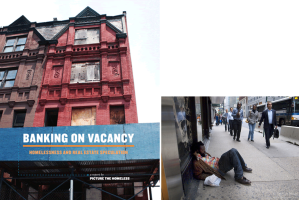This is a follow up to my post Unmasking Pay for Success . Here, I think I have succeeded on showing that this is nothing but a Ponzi Scheme. It’s based on how pay-for-success has been applied in the UK. It’s dry material and, as usual, long. But if you bumped into this post and don’t read it, don’t say later that you weren’t warned about the truth behind ‘pay for success’.
I still have another part on this next week. It’s about how Pay for success is being applied here in the USA. I hope you find this interesting and informative. Links are at the bottom.
“PAY-FOR-SUCCESS”: ANATOMY OF A PONZI SCHEME

“UK building integrated impact investment marketplace”
Over there they call it “outcomes-based financing”.
“These contracts allow the government to outsource the provision of a service [privatize the functions of government] to impact businesses or other private-sector contenders and only pay for that service once a defined set of outcomes is delivered.”
Now, who in its right mind would want to get into that type of business: you get paid only if you deliver, for example, a sober alcoholic? Sure, it started with services for the unemployed and released prisoners, but it is moving to ALL social services, including mental disabilities and children and alcoholism services. Social services and human behavior cannot be shaped into ‘asset instruments’. Somehow, though, Wall Street will find a way to do it.
“Changing government procurement practices: Outcomes-based financing”
[I had to look it up: procurement = acquisition of good and services from an external source. Very complicated topic too.]
Payment-by-results contracts
“The suppliers – those companies that will be commissioned to find employment for the target populations – are paid on a staggered basis, reflecting achieved outcomes: there is an upfront fee, a job outcome fee once the individual is employed, and a sustainment fee once the individual has maintained the employment for a given period.”
The “upfront fee” is an issue for me. How much is it? How about the “sustainment fee”?
“Importantly, the sustainment fee is meant to make up a “substantial” portion [quote provided by JP] of the total amount the government will pay5, and the government will not pay anything should the outcomes not be delivered.”
There’s another scheme, more ‘attractive’ than that one:
Social Impact Bond
“raising GBP 5mm in a bond whose payout is linked to the government savings achieved by reducing recidivism at Peterborough Prison. Notably, unlike traditional bonds, investors stand to lose their full principal should there be no reduction in recidivism6 since, similar to the Work Programme contract, the government will not make any payment if the defined outcomes are not achieved.
Wait! Don’t run yet to Wall Street to buy these bonds. A bond is a bond. It means that the government is BORROWING. Bonds are DEBT the government owes. Caught in a lie once again. Our government says that ‘pay for success’ is a ‘win-win’ situation because it takes care of social services without engaging in debt. Yeah, right.
But let’s see how JP gets out of this unattractive risky bond business where you are bound to lose everything if you play with them

Risk transfer.
.
“Understanding the risk transfer inherent in outcomes-based financing”
You can bet on it: there’s INHERENT risk in ‘pay for success’. And it gets “transferred” to somebody by somebody. To whom down the pyramid do you think the transfer is more likely to be passed on? Think, then read.
“Transferring risk to the right recipient”
“The Social Impact Bond transfers the impact delivery risk (and hence the risk of financial return) from the government to third-party investors who provide capital to the service providers and take the risk that outcomes may not be achieved.
Did you get that? The big financial institutions who provide the capital is the one [gulp] who stand to lose their money in the bond scheme. What are the chances that JP will want a piece of that losing action? Of course not. JP compares this bond thing with the other scheme:
“By contrast, the Work Programme’s payment-by-results contracts transfer the impact delivery risk from the government to the service provider.”
Uhm, “the provider”? Does that means YOU, Community Access? Aren’t you laughing yet? Let’s see what JP says is necessary before signing the dotted line for these contracts, given these risks:
Both working capital and risk capital are required to win these contracts
“…delivering on these contracts requires working capital to cover operating costs until payments are received, and risk capital to cover the risk that outcomes are unsuccessful (and no program payments are received).”
THE PONZI SCHEME
And from where do you, my little small- business -entrepreneur -non-for-profit get that money?
“each procurement contract is meant to engage a Social Investment Partnership comprising a financial sponsor (or consortium of sponsors) who will then engage one or more service provider8. This arrangement enables the impact business to transfer the risk to investors,

Follow King Midas.
as in the case of the Social Impact Bond. The next natural question is: how much risk are investors willing to take on these new
THE NATURAL QUESTION??! HELLO! No wonder Bloomberg said that he and his billionaire pals HAVE to infringe on our freedom! PLEASE DO! Don’t let me INVEST THERE! We don’t know what we are doing!…………….Ok, enough banter.
So, at the end, the risk was passed on to the low-level investor, not the ‘senior’ investor. Does Ponzi scheme come to mind? It should.
But no, it doesn’t end there. Keep reading.
OF PONZI SCHEME DREAMS YET TO BE REALIZED
“Finding the right risk and return profile”
[This is the part where the cookie crumbles.]
“Some market participants have anecdotally provided feedback that the pricing does not sufficiently capture the additional cost of the hardest to reach outcomes [IT’S NOT PAYING!], and some fear this will lead service providers to focus rather on the easiest to employ populations. In both instruments, the upside is capped while the downside is not, and the probabilities of realizing the impact are yet to be determined.
It’s not working. No ‘social impact’ = no meaningful jobs created and recidivism not reduced = no payment to small investors = no money saved: a loss-loss situation.
And what do you think the big financiers will ask the government to do with this losing ‘initiative’?
“More risk-sharing with the government could reduce the downside exposure,”
This “pay for success” will end up with ALL the risks being passed on to the government, the small level investors and the service provider, and of course, to what is left of the middle class. The government is there to serve and protect the financial market. This is the JP evidence:
“Engage cornerstone investors, like Big Society Capital”
“With the aim of growing the impact investment sector more generally, the government established Big Society Capital (“BSC”) in July 201112. Backed by a projected GBP 600mm in capital, this organization is designed to provide financing directly into impact investments and also to invest in infrastructure and initiatives that would encourage faster market growth.”
When a government ‘invests’ 600 million bucks to help ‘big capital’ (the ‘society’ in between Big and Capital is there to cover ‘big capital’), you know it is doing EVERYTHING and ANYTHING for them. The government will buckle down and take the risk and put no controls, as they do today when privatization comes with no monitoring.
ON WALL STREET BUILDING YOUR BUSINESS…WITH GOVERNMENT $$
Now, all of this business is supposed to save “tax payer” money by asking businesses to take on the functions of government and to be willing to be paid if and when the service delivers the outcome. No money ahead, supposedly. Well, take a look at how the government will have the responsibility of building a business, from the ground up, take loans for this business, take the risks eventually and let the profits go to the big capitals. If no profits, we lose, financial markets will be protected by the government.
“Ensuring impact businesses are ready to compete
“While the prospect of capital [provided by the government] will help to ensure that impact businesses can financially manage payment-by-results contracts, for example, they also need to be “investment ready” in order to access that finance.”
Basically, the government will put billions of dollars in the seed money, hire big corporations to “teach” the little ones (paid by the government)t and “de-risk” (JP’s term) these adventurous capitalists by providing the money that will pay JP when the whole Ponzi scheme collapses.
I invite you to read that document. It’s lots of fun…not, but it IS interesting to see the calculating mentality of the greedy billionaires planning their next attack on the people.
This post may be revised later.
Links:
Goldman to invest in NYC jail program
The JP Morgan document:
Counter(Imp)acting Austerity: The global trend of government support for impact investment



 Electronic Frontier Foundation
Electronic Frontier Foundation